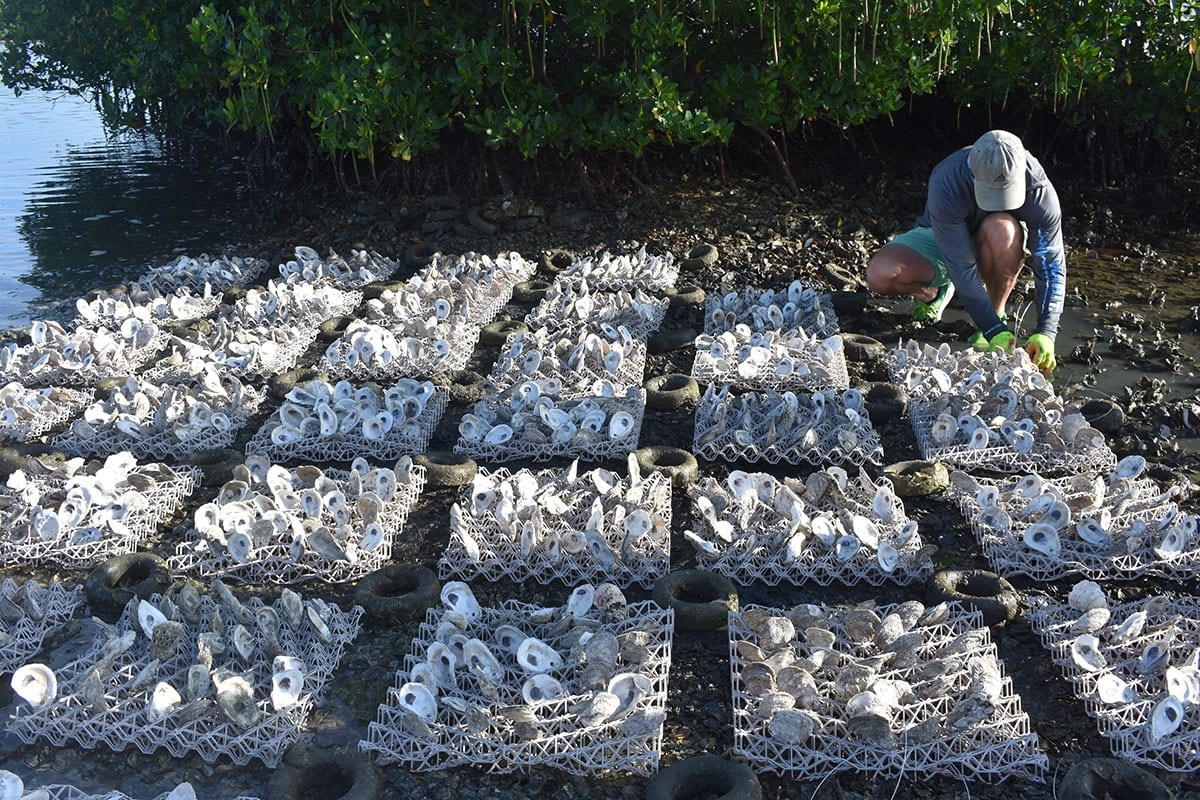
Have you heard the one about the potato and the oyster?
It’s not a joke, but a game-changing technology — a three-dimensional grid made from potato starch — that has the potential to help reverse the decline of the world’s oyster reefs.
And representatives from the company behind it — Biodegradable EcoSystem Engineering Elements (BESE) — recently came all the way from the Netherlands to assist volunteers and staff from the Sanibel Captiva Conservation Foundation (SCCF) in installing biodegradable structures aimed at helping our local oyster beds and mangroves thrive.
Why is that such a big deal? Over the last two centuries, 85% of the world’s oyster habitat has disappeared. Coastal run-off, natural predators, disease and over-harvesting have taken a toll.
Healthy oyster beds are the basis of a healthy ocean: Oysters filter water through their systems in order to feed on plankton. As the oysters filter the water for food, they also make the water clearer. With clearer water, sunlight can shine through the water and nourish seagrass beds. As seagrass beds flourish, so does the entire food chain of our marine ecosystem.
According to SCCF Marine Lab Director, Eric Milbrandt, “Each oyster will filter 50 gallons of water per day. So if we even get 200 or 300 oysters per square foot, we’ll get a major water quality benefit.”
To watch a recent news segment from WINK News on the unique program, click here. We also found some info from the University of Central Florida detailing more of the fascinating process that we’d like to share here.


